When tiny flying insects start buzzing around your Northern Virginia home, it’s frustrating not knowing exactly what you’re dealing with. Are those fruit flies hovering over your kitchen counter, or fungus gnats emerging from your houseplants? Maybe they’re even drain flies coming from your pipes. Each pest requires a different approach to eliminate effectively.
After four years as a registered technician and being part of a family business that’s served the DMV area for over 50 years, I’ve helped countless homeowners identify and eliminate these common indoor flying insects. The key to getting rid of them for good is understanding exactly which pest you’re facing.
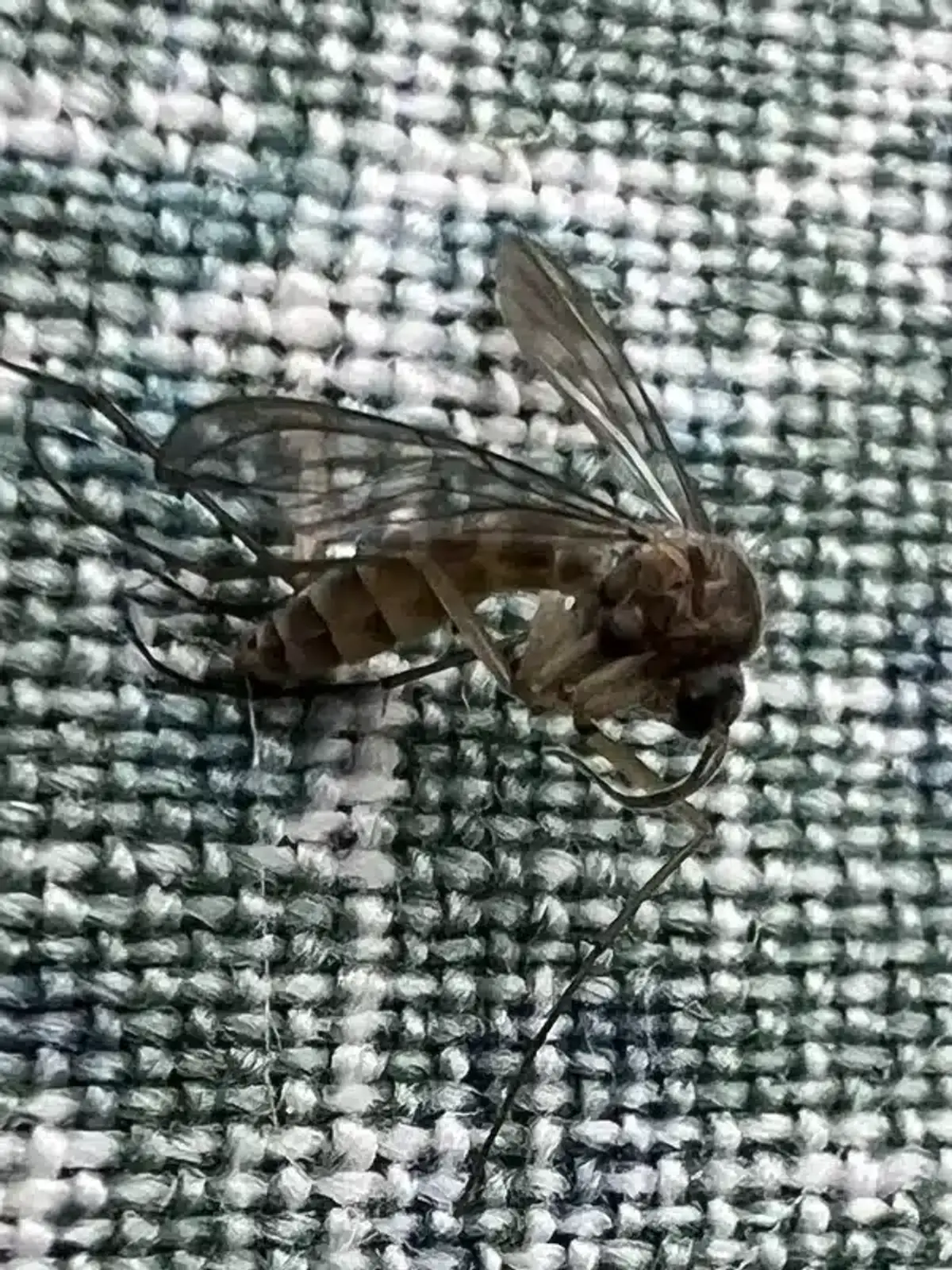
Quick Identification: Visual Differences Between Fruit Flies and Fungus Gnats
The easiest way to tell these pests apart is by looking at their size, color, and where you spot them. Fruit flies are typically tan to brown with bright red eyes that are easy to see. They measure about 1/8 inch long and have a more compact, stout body shape.
Fungus gnats look quite different. They’re slender, black or dark gray insects that resemble tiny mosquitoes. They have long, spindly legs and antennae, plus clear to smoky wings with a distinctive Y-shaped vein pattern.
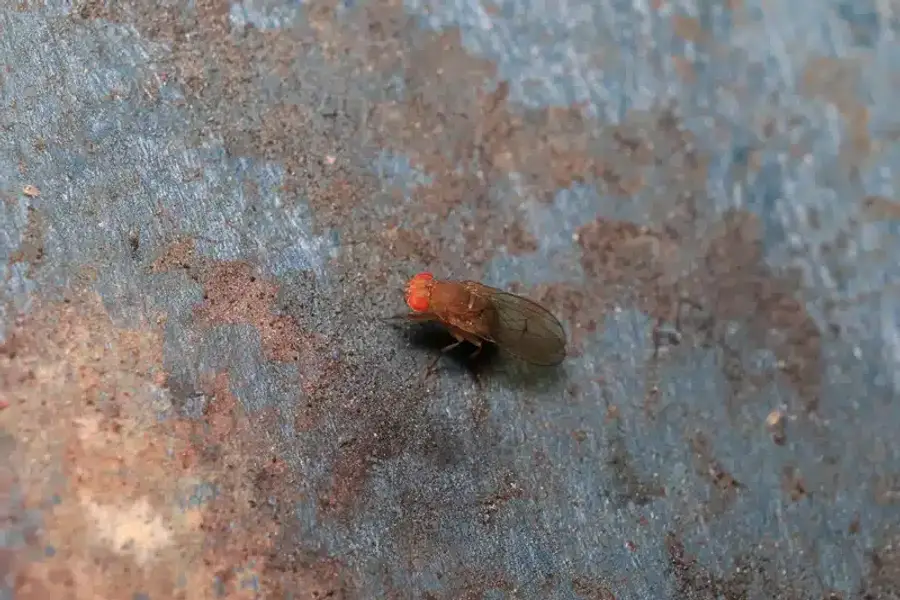
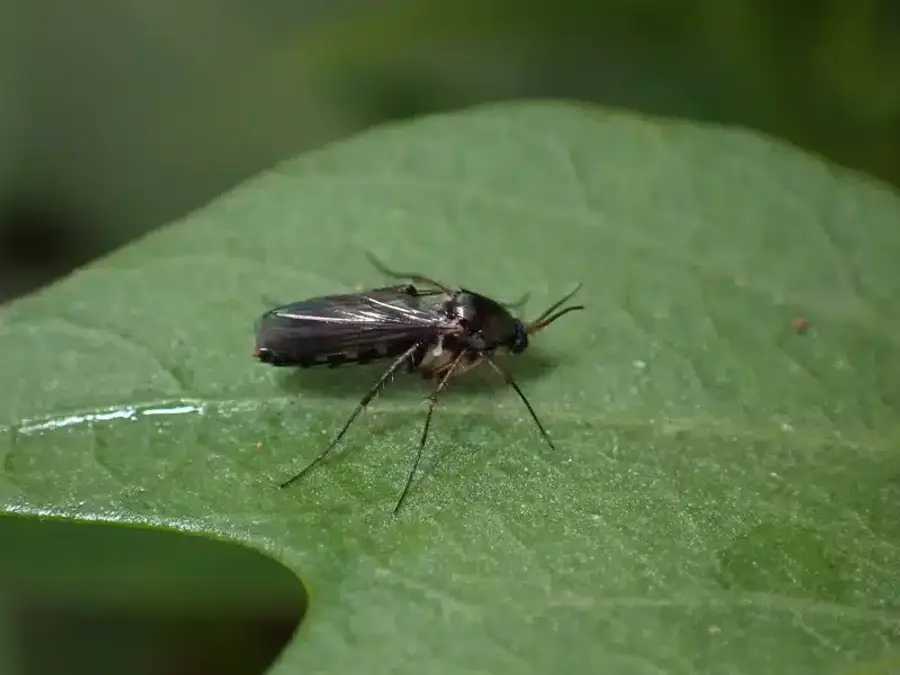
You’ll also notice differences in how they fly around your home. Fruit flies are agile fliers that hover in loose clouds above produce or near drains. Fungus gnats have weak, erratic flight patterns and tend to stay low, making short start-stop flights just inches above soil surfaces.
Quick ID Guide
- Fruit Flies: Tan-brown with bright red eyes, hover over produce and drains, agile flight patterns
- Fungus Gnats: Dark gray/black mosquito-like appearance, long spindly legs, weak erratic flight near plants
- Location Test: Near houseplants = fungus gnats, near kitchen/produce = fruit flies
- Size Comparison: Both about 1/8 inch long but fruit flies are more compact and stout
Where These Pests Breed: House Plants vs Kitchen Areas
Location is your biggest clue for determining whether you’re dealing with fruit flies or fungus gnats. Each pest has very specific breeding preferences that make identification straightforward once you know what to look for.
Fungus Gnat Breeding Sites
If you’re seeing tiny flies around your houseplants, you’re likely dealing with a fungus gnat problem. These pests breed exclusively in moist potting soil, especially media that’s rich in peat or compost. They’re particularly drawn to overwatered indoor potted plants where the top layer of soil stays consistently damp.
What does the science say?
According to Colorado State University Extension, fungus gnat larvae develop specifically in the upper 2-3 inches of growing medium where moisture levels are highest. Adult females lay their eggs directly in the soil surface, with larvae feeding on organic matter, fungal growth, and occasionally healthy plant roots. This shallow breeding zone explains why top-soil drying is such an effective control method.
Fruit Fly Breeding Locations
Fruit flies prefer entirely different breeding sites. They’re attracted to fermenting organic matter throughout your kitchen and dining areas. Common breeding spots include overripe fruits or vegetables, spilled beer or soda, recycling bins, and even your garbage disposal.
What does the science say?
Research from the University of Maryland Extension shows that fruit flies lay their eggs specifically on moist films where sugars are actively fermenting. A single female can produce around 500 eggs during her lifetime, with the complete development cycle from egg to adult taking just 8-10 days at room temperature. This rapid reproduction rate explains why small fruit fly problems can quickly become major infestations if breeding sites aren’t eliminated promptly.
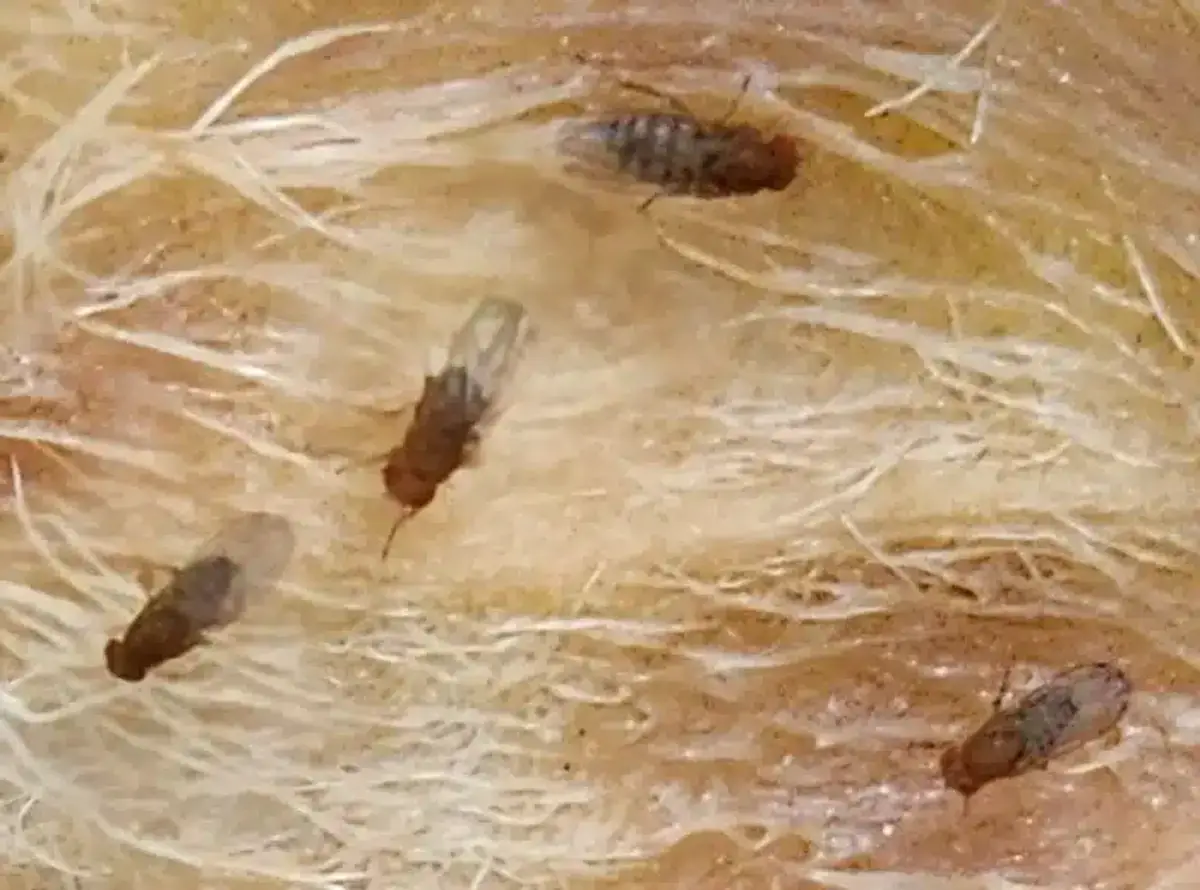
Larvae Identification: Black Heads vs White Maggots
If you want to confirm which pest you’re dealing with, examining the larva can provide definitive identification. The larvae of these two insects look completely different and live in distinct environments.
Fungus gnat larvae are translucent white with shiny black head capsules. They can grow up to 1/2 inch long and live in the top few inches of moist soil. You can check for them by inserting a raw potato slice about 1/4 inch deep into the soil of suspected plants. After 48 hours, remove the potato and look for small white larvae with black heads.
Fruit fly larvae appear as white, legless maggots without any hardened head capsule. They’re much smaller than fungus gnat larvae, reaching only about 1/4 inch in length. These maggots live just below the surface of fermenting material, not in soil.
Flight Patterns and Behavior
The way these insects move around your home provides another reliable identification method. Each species has distinct flight characteristics that become obvious once you know what to watch for.
Fungus gnats are weak fliers with dangling legs. They make short, erratic flights and often appear to “hop” from spot to spot rather than flying smoothly. You’ll frequently see them crawling on soil surfaces or clinging to windows, as they’re strongly attracted to light.
Fruit flies demonstrate much more agile flight behavior. They hover persistently over fruit bowls, wine glasses, or near sink drains. When disturbed, they fly quickly but return to their food sources almost immediately. They tend to gather in small hovering swarms before landing on vertical surfaces.
Seasonal Peaks in Northern Virginia
Understanding when these pests are most active helps with both identification and prevention. In our Northern Virginia climate, each species follows predictable seasonal patterns.
Fruit flies surge indoors from late summer through early fall, typically peaking between August and October. This coincides with outdoor fruit fly populations reaching their highest levels and the abundance of fresh produce from farmers markets and gardens.
Fungus gnats become most noticeable during late fall and winter months. This happens when people move patio plants indoors and when heating systems create the warm, humid conditions these pests love. Additionally, houseplant watering often exceeds plant uptake during shorter winter days, creating the consistently moist soil conditions where gnats nest in the soil.
Drain Flies: The Third Common Indoor Fly
While discussing flies and gnats, it’s worth mentioning drain flies, another common household pest that homeowners often confuse with fruit flies. Drain flies are small, dark, fuzzy-looking insects that emerge from sink drains, floor drains, or your garbage disposal.
Unlike fruit flies or fungus gnats, drain flies breed in the biofilm that builds up inside plumbing. They don’t fly around produce or plants but instead stay close to drain openings. You might notice them resting on bathroom or kitchen walls near plumbing fixtures.
For more detailed information about distinguishing drain flies from fruit flies, check out our comprehensive drain fly vs fruit fly comparison guide.
| Comparison | Fruit Flies | Fungus Gnats | Drain Flies |
|---|---|---|---|
| Appearance | Tan-brown, red eyes | Dark, mosquito-like | Dark, fuzzy, moth-like |
| Breeding Site | Fermenting produce | Moist potting soil | Drain biofilm |
| Flight Pattern | Agile hovering | Weak, erratic | Short hops near drains |
| Common Locations | Kitchen, fruit bowls | Near houseplants | Bathroom, sink areas |
Targeted Control Methods
Successfully eliminating these pests requires different approaches because they breed in completely different environments. What works for fruit flies won’t necessarily help with a fungus gnat infestation, and vice versa.
How to Get Rid of Fruit Flies Fast
The best way to get rid of fruit flies starts with eliminating their breeding sites. Store ripe produce in the refrigerator and dispose of any overripe fruits or vegetables immediately. Clean your kitchen drain and garbage disposal thoroughly with hot water and a brush to remove biofilm where fruit flies may lay their eggs.
A simple fly trap using apple cider vinegar and a drop of dish soap works effectively for capturing adult fruit flies. Place the trap near problem areas and replace the mixture every 2-3 days. This method helps reduce adult populations while you address the underlying breeding sites.
How to Get Rid of Fungus Gnats
Controlling fungus gnats focuses on moisture management in your house plants. Allow the top 1-2 inches of potting soil to dry between waterings. Consider bottom-up watering or capillary mats to avoid surface wetness where gnats are attracted.
For severe infestations, biological controls work exceptionally well. Virginia Cooperative Extension recommends Bacillus thuringiensis var. israelensis (Bti) soil drenches that target fungus gnat larvae without harming plants. Beneficial nematodes like Steinernema feltiae also provide excellent control within 3-4 days of application.
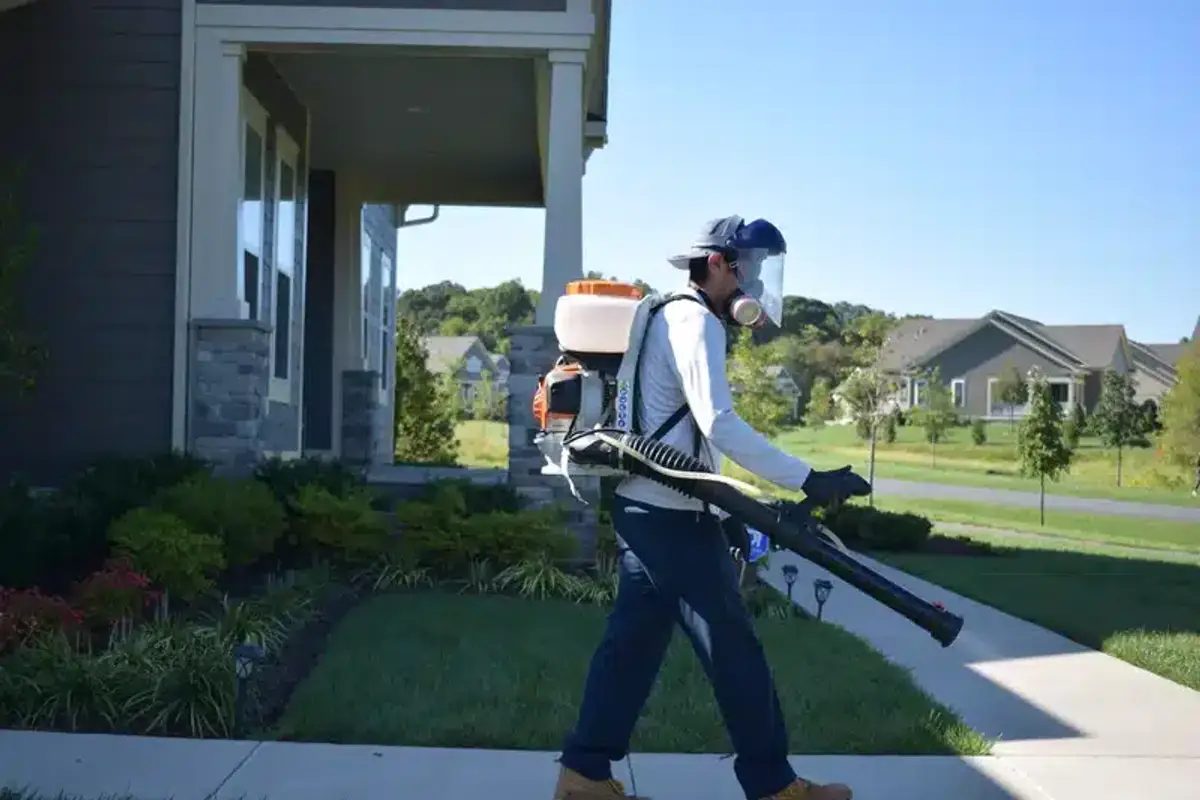
When to Call Professional Pest Control
Sometimes DIY methods aren’t enough to get rid of them for good. If you’ve tried multiple approaches without success, or if you’re dealing with a large infestation that affects multiple areas of your home, professional pest control may be necessary.
Professional technicians can identify the exact species you’re dealing with and locate breeding sites that homeowners often miss. They also have access to specialized products and application methods that provide more comprehensive control than consumer-grade solutions.
At Better Termite & Pest Control, we’ve removed 9 of the harshest chemicals commonly used in our industry. Instead, we use products like Essentria, Alpine, and Borate-based solutions that are EPA approved and ones we’d feel comfortable using in our own homes. Our approach focuses on identifying and eliminating the root causes of infestations rather than just treating symptoms.
If you’re struggling with persistent fly and gnat infestations in your Northern Virginia home, our Northern Virginia pest control team can help. We serve communities throughout the region, including Arlington, Alexandria, and surrounding areas.
Prevention Tips for Long-Term Control
Preventing future problems requires understanding what attracts these pests to your home in the first place. Both species are drawn to moisture and organic matter, but in different forms and locations.
For fruit fly prevention, maintain clean kitchen surfaces and dispose of garbage regularly. Rinse recyclable containers before placing them in bins, and address any plumbing leaks that create moisture around drains. During peak season in Northern Virginia (August through October), be especially vigilant about refrigerating ripe produce quickly.
Preventing fungus gnats means managing moisture in your potted plants. Use well-draining soil mixes and pots with drainage holes. Remove any decomposing plant material from soil surfaces, and consider using yellow sticky cards near plants to monitor for early signs of adult activity.
Both pests can be more problematic in our humid DMV climate, especially during summer months. Proper ventilation and humidity control help create less favorable conditions for breeding and development.
If you’re dealing with persistent issues despite following prevention methods, don’t hesitate to reach out for professional help. Our experienced team understands the unique challenges that Northern Virginia homeowners face with these common flying insects. Call us at 703-683-2000 or email info@bettertermite.com for a consultation and customized treatment plan.
Frequently Asked Questions
How do I know if I have fungus gnats or fruit flies?
+
Look at where you see them flying. Fungus gnats appear around houseplants and have long legs with dark, slender bodies like tiny mosquitoes. Fruit flies hover near produce, garbage, or drains and have tan-brown bodies with bright red eyes. The location and appearance are your best identification clues.
What kills fungus gnats instantly?
+
While there's no true "instant" solution, yellow sticky traps catch flying adults immediately, and Bti (Bacillus thuringiensis israelensis) soil treatments kill larvae within days. The most effective approach combines reducing soil moisture with biological controls rather than looking for quick chemical fixes.
Why do I suddenly have fungus gnats?
+
Sudden fungus gnat problems usually result from overwatering houseplants, bringing in new plants with contaminated soil, or seasonal changes that increase indoor humidity. They can also emerge when you move outdoor plants inside for winter, as the warm indoor conditions accelerate their reproduction.
How to get rid of fruit flies and fungus gnats?
+
Since these are different pests, they require different approaches. For fruit flies, eliminate fermenting organic matter and use vinegar traps. For fungus gnats, reduce soil moisture and apply Bti treatments. Identify which pest you have first, then target your control methods accordingly.
Can fruit flies and fungus gnats spread diseases?
+
Fruit flies can potentially spread diseases through contaminated food by carrying bacteria on their bodies from rotting organic matter. Fungus gnats are generally not harmful to humans but can damage plant roots and vector plant pathogens that affect houseplant health.
What's the difference between drain flies and fruit flies?
+
Drain flies are fuzzy, moth-like insects that breed in plumbing biofilm and stay near drains. Fruit flies are smooth-bodied with red eyes and breed in fermenting produce or organic matter throughout kitchen areas. Drain flies don't hover over food like fruit flies do.
Do fungus gnats bite people?
+
No, fungus gnats do not bite people. Adult fungus gnats don't feed on blood or human tissue. They're primarily a nuisance pest that may be bothersome when flying around your home, but they pose no direct threat to humans through biting or stinging.
How long do fruit fly infestations last?
+
Fruit fly infestations can persist indefinitely if breeding sites remain available. However, once you eliminate their food sources and breeding areas, adult populations typically decline within 1-2 weeks since their life cycle is only 8-10 days at room temperature.
With five years of hands-on experience in the pest control industry, George Schulz is a registered technician with the Virginia Pest Management Association and a proud third-generation professional in a family business that's been protecting homes for over 57 years. He manages and trains a team of service pros while also leading internal research efforts—recently spearheading a deep-dive review of thousands of documents on pest control materials to hand-pick the most kid and pet friendly, most effective solutions tailored specifically for homes in the DC metro area.
